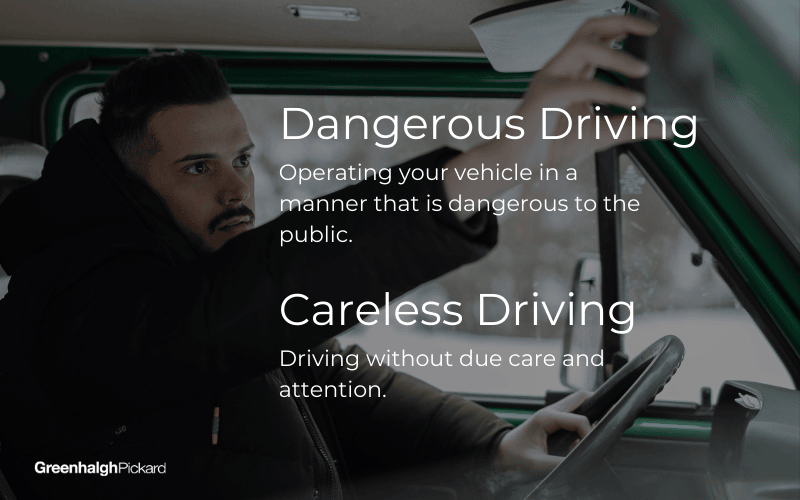Queensland Courts take a strict view on drivers who drive dangerously on the road. In 2014, there were 139 reported fatalities caused by drivers who were speeding, drinking or fatigued.
Unfortunately, dangerous driving fatalities in Queensland have increased since 2014. In 2023, there were 277 reported crash fatalities in Queensland as a consequence of speeding, drink driving, fatigue, and drivers being distracted.
What is Dangerous Operation of a Motor Vehicle?
Section 328A(1) of the Criminal Code Act 1899 (Queensland) outlines that dangerous operation of a motor vehicle occurs when “A person…operates, or in any way interferes with the operation of, a vehicle dangerously”.
The maximum penalty for dangerous operation of a motor vehicle is 3 years imprisonment or 200 penalty units. However, compounding factors will increase the penalty. These factors include:
- Intoxication
- Excessive speeding or racing
- Previous convictions
To better understand what qualifies as driving dangerously, let’s look at how it compares to careless driving.
Dangerous Operation vs Careless Driving

Dangerous Driving is operating your vehicle in a manner that is dangerous to the public. It’s one of the most serious criminal driving offences in Queensland.
Careless Driving is driving without due care and attention. It’s a less serious offence compared to dangerous driving and is governed by section 83 of the Transport Operations (Road Use Management) Act 1995 (Qld).
Examples of Dangerous Driving
- Striking a cyclist because you were driving too close
- Excessive speeding
- Driving in an unlawful race
- Operating a vehicle under the influence of alcohol or drugs, or otherwise where you are considered unfit to be driving (for example, whilst seriously fatigued).
- Causing grievous bodily harm or death to another person
Examples of Careless Driving
- Looking at a mobile device and hitting another vehicle as a result
- Eating while driving and running a red light
- Applying makeup while driving and crashing into a stationary object
Dangerous Operation Penalties in Queensland
There are a few different types of charges for dangerous driving in Queensland.
Dangerous Operation of a Motor Vehicle
A person who drives in a manner that is dangerous to the public may be charged with dangerous operation and could face punishment by way of a fine or up to 3 years imprisonment. Comparably, an offence of careless driving carries a maximum penalty of a fine or up to 6 months imprisonment.
Dangerous Operation – Aggravated Offence
Where a charge of dangerous driving is considered an aggravated offence, the maximum penalty imposable by the Court increases to a fine or up to 5 years imprisonment.
Dangerous Operation Where Defendant Twice Previously Convicted
If the Defendant has been twice convicted before for an offence of dangerous driving, the Court must impose imprisonment as part of the punishment.
Dangerous Operation Causing Grievous Bodily Harm or Death
When dangerous driving leads to grievous bodily harm or the death of another person, the maximum penalty increases to 10 years imprisonment (or 14 years if any of the aggravating features are involved).
Dangerous Operation Penalties – Case Study
In R v Henderson; Ex parte Attorney-General (Qld) [2013] QCA 063, the offender used their vehicle as a weapon causing the death of three (3) people and causing grievous bodily harm to another.
The driving offence was considered aggravated as the offender:
- Committed the offence whilst their driver’s licence was suspended;
- Was already on bail for violent offending; and
- Fled the scene at the time of the offending.
The Court of Appeal sentenced the offender to 10 years’ imprisonment.
How is Dangerous Operation Determined?
To be found guilty of dangerous driving, the Court must consider the manner of driving and whether this posed a serious risk or disregard to the safety of the public and/or the driver/passengers of the vehicle in question.
It is generally not excusable if the driver was negligent or had no intention of causing any harm or damage as a result of operating the vehicle dangerously. The manner in which your matter is handled whilst in Court may seriously impact prospects of receiving a favourable outcome.
Greenhalgh Pickard is equipped to provide advice that is realistic and work towards reaching the best possible outcome for our clients.
If you or someone you know has been charged with a serious traffic offence, it is important to understand the consequences this may have and deal with the matter with your best foot forward. Contact us today to see how we can help.
Disclaimer:
The information contained in this newsletter is provided for informational purposes only and should not be construed as legal advice on any subject matter. Readers should not act or refrain from acting on the basis of any content included in this newsletter without seeking appropriate legal or other professional advice. The content of this newsletter contains general information and may not reflect current legal developments, verdicts, or settlements. We expressly disclaim all liability in respect to actions taken or not taken based on any or all the contents of this newsletter.




